By Gretel Adams
This winter we put up a three-bay greenhouse, something larger and more permanent than anything we have built before. Each bay is 22’ wide by 96’ long, covering a total area of 66’ by 96’. Instead of the same area covered with standalone tunnels, having gutter-connected bays that share the same ground posts covers a larger space more efficiently. It is heated by natural gas, and automated ridge vents plus roll-up sides provide excellent ventilation. The decision to build it was complex and took many meetings, as well as pro and con evaluations before finalizing.
Costs versus profits
Most importantly we knew that we wanted to increase our season extension with heated greenhouse production for better employee retention by creating more winter hours. Plus, people are hungry for blooms in the spring, especially if winter has been dreary and long. We hadn’t previously had many flowers before mid-March because of the way our fall blooms lined up with getting spring blooming crops in the ground. In zone 6a in Columbus, Ohio, we usually get frost in the middle of October. So in order for us to have flowers for Thanksgiving we use our heated greenhouse space for season extension in the fall as well as the spring.
This means our fall plants aren’t coming out of the greenhouse until the end of November or sometimes December. That creates a crunch time in fall when we want crops to be going in, but we are also trying to hold onto flower sales later into the season. With this new space we knew it would alleviate some of that crunch.
To confirm it wasn’t just our gut and desire to grow more driving us, we revisited our enterprise budgets for each crop we were thinking of increasing: ranunculus, anemones, stock, and snaps. We’re always open for trials too, so there are a few test crops in there (poppies, fritillaria, early lisianthus, dusty in crates). Enterprise budgets are described in Richard Wiswall’s Organic Farmer’s Business Handbook, with downloadable templates that track inputs and outputs. They track labor and equipment rates, and with some data on harvest timing and processing, you can create a sheet that tells you the actual cost of production and profit per square foot for each crop. There is a lot of data being entered, so they take a long time to build, but they are worth it, letting you know which crops are most worth growing for your operation. What they showed us was that even with heating the houses and the upfront costs of infrastructure, the crops would generate revenue immediately, making it a high-impact expense.
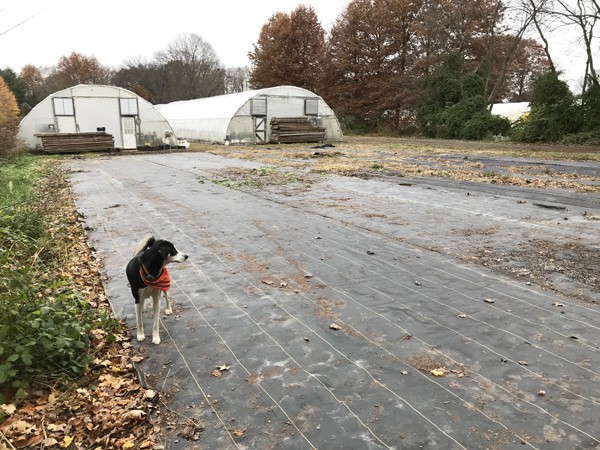
Location
In the location where this three-bay greenhouse stands now, there were two smaller tunnels in its place. The smaller tunnels were homemade structures we had purchased from a retiring grower that were used to grow herb plants. They were short arches, meaning that flowers could only be grown down the center aisle to have enough space to grow tall. Plus, there was no way to vent the sides, so even though we built two roof vents, it was sweltering in there during the summer, rendering those houses unusable even with shade cloth on them. We tore down these structures, sold one of them, and used the bows from the second one to build covered space for houseplant sales at our farm stand.
In our original setup, house one was unheated and had a place where we could plant in the ground. House two was originally used as an extension of our heated propagation house, which meant when we had overflow from the smaller propagation house, we would have to then move flats to fit everything into house two. I knew every time we touched those flats that the crop became less profitable, so our plan was to increase space for flats to avoid the plant shuffle from one house to another.
When we met with life mentors we’ve known since our pre-farmer days, their thought was, ‘why go with the big fancy house if we knew we could make money from the regular Quonset style houses?’ What swayed our decision was that since house two was originally heated, we already had gas, water, and electric to that house. That meant that we could have all heated space and cover more square footage more efficiently if we did a gutter connect instead of two separate Quonset houses.
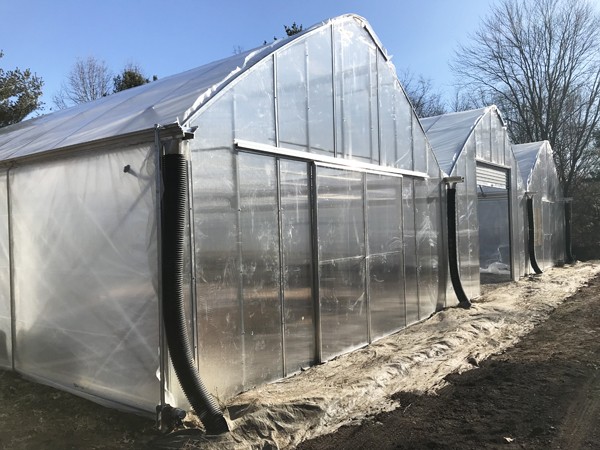
Suppliers and financing
There were many options for purchasing a gutter connect house like this, all with different bells and whistles, so we started getting quotes and talking to growers about which brands they were using, as well as attending trade shows to meet vendors. With prices ranging from $60,000-$120,000, we knew that we were going to need financing in order to make this large of a purchase. Let’s talk about financing for a minute before I go on about the purchase.
When we first started borrowing money for the business, it was hard for me to come to terms with it because I was always raised not to have debt, but we learned through research and meetings with business professionals that there is a difference between personal and business debt. If you can borrow $1 and know you are going to make $1.50 on that investment, then it’s acceptable for a business to take on good debt to attain growth, as long as your net is not going down as the business grows.
We chose to take advantage of low interest rates to finance this infrastructure while we are still young. But I think there is a stigma in the farming community, where the mentality of borrowing money is looked down upon by some. Having the data to know you are growing profitable crops is necessary in the decision-making process, and can be an important part of growing your business.
It may take a few years of growing and collecting data before you can reach a point where you are confident in making big money decisions. The fallacy that I held on to was that at some point it would become easier to make decisions about money because the business made more money. But unfortunately that wasn’t the case, because the risks just got bigger as the business grew and we were making larger investments.
If it sounds scary, there are tools out there to help. We took a class through Cornell University online called Holistic Financial Planning, which has you compare goals and desired outcomes and provides a format for comparing pros and cons. This has been really helpful, along with gut feelings and confidence in yourself and your growing practices, which should increase the more years you have in your business.
Going to a bank to borrow money as a farmer can be difficult, especially with no off-farm income in the beginning. But having good records and showing them plans and enterprise budgets will help to show lenders you know what you are talking about. Also, using a bank like Farm Credit Services helps because they know how seasonal farm income works. We use Farm Credit for our yearly operating loan, our barn, and equipment loan. (Recently at a workshop, I learned some FC branches even provide payroll and other services, so definitely check them out!)
A lot of these loans are not set up with a monthly payment but instead you are just expected to pay either a lump sum each year, or have a percentage of it paid off by a certain date. This time we were able to refinance our house as collateral to put up this greenhouse, which is an increase in our monthly house payment, meaning it needed to be accounted for in winter cash flow (unlike our other loan payments with FCS).
We ended up going with Yoder’s Produce Supply, an Amish company that instead of installing one brand of house, gathers components from multiple suppliers to give you the best price. We decided to have them put it up, which is the first time we’ve ever hired that out. That meant they could construct it while we were able to keep farming, dividing tubers, figuring out the soil steamer we had purchased, and starting other winter projects. It was the best decision we’ve made because they got it up in just a few weeks, and then it was up to us to figure out running all the utilities in the house, and hook up the gas, electric, and controls.
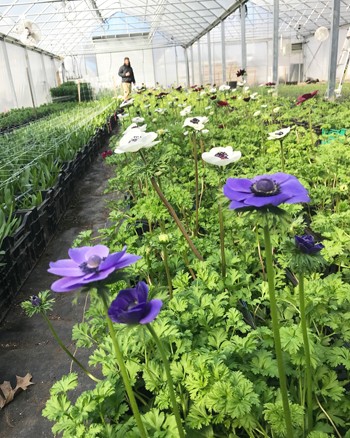
Setting up the bays
The drainage under house two wasn’t great, so we laid gravel down to increase drainage with a new layer of landscape fabric on top, which helped significantly with humidity in the house and with fungus gnats. Making that move though meant that the 3-bay house that we put up couldn’t be used to plant in the ground in that section, so that bay of the greenhouse became the “seed house”. So we dedicated our other propagation house to orchids, stock plants, as well as storage of all the plants we retail; whereas all the seed starting now happens back in the new seed house (which is really bay three).
We knew where house one was that we wanted to plant in the ground, so that became bay one. And we were undecided about the space that used to be in between the houses, so we decided to produce in crates this year before committing to putting down gravel or digging beds. So for now, bay two is crate production, which is why we have a lot of trial crate crops (anemones, dusty miller, fritillaria, freesia and snaps), as well as our regularly programmed lilies for bouquets.
During construction we had been accumulating crops planted in crates. We have another greenhouse that is heated and used to plant directly into the ground, but we had laid landscape fabric down and were using it for crate production while we waited to finish the new house. When we were ready, we had a massive move-in day with our crew at the end of January, using a hay wagon and tractor to get through the muddy mess while we moved crates around all day.
With our increased production in the new house, we have a national shipping program unfolding this spring with an online store available for florists and designers across the US. Last year we did a “soft opening,” testing out shipping to a select few customers to work out some of the kinks, so we are really excited about what this season holds for us. We are building a Shopify store through the template that the ASCFG built. We’ll be sure to update after this season to discuss the outcome of this new sales avenue.
Gretel and Steve Adams of Sunny Meadows Flower Farm offer farmer consultations to help assist others in their decision-making processes. Check their website for more details about possible topics of discussion. Get in touch if you are a grower or designer interested in participating in the national shipping program being rolled out by The Columbus Flower Company.

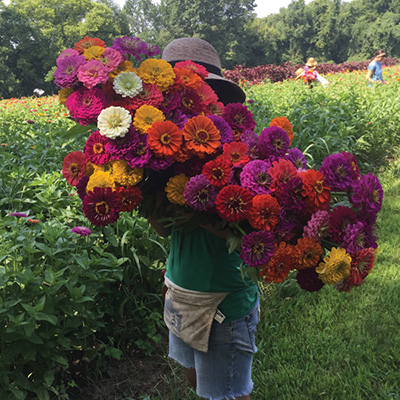
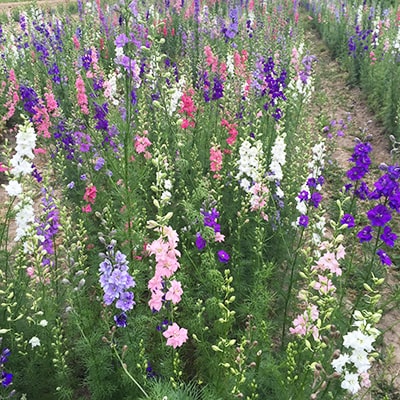
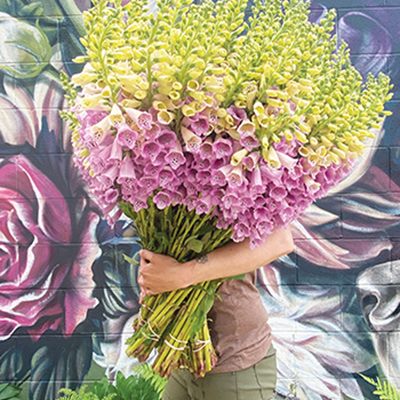
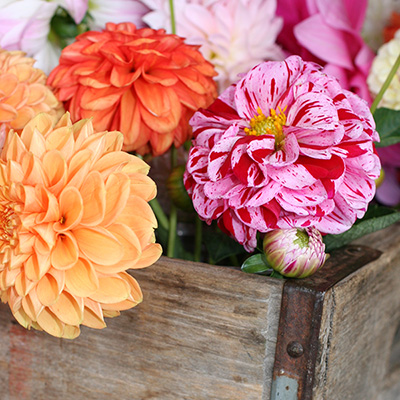


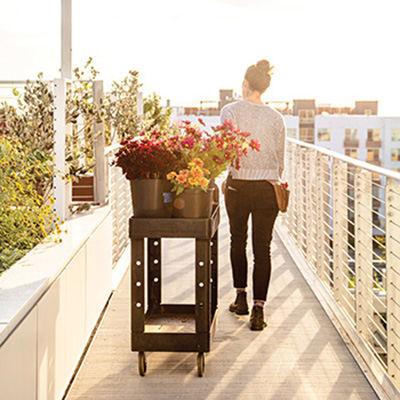
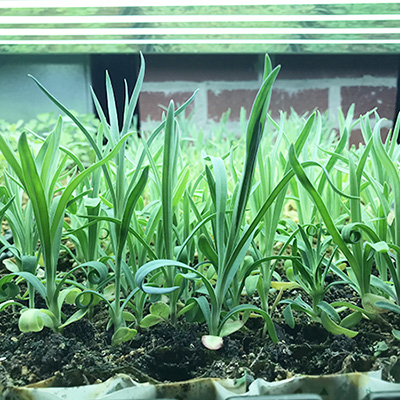
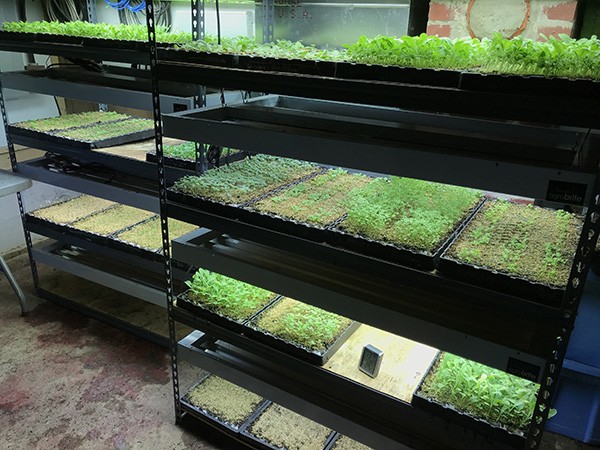 Have you ever lost precious seedlings in your greenhouse to frost? How about tossing a flat or two out due to heat stress or a missed watering? Or better still, stared at a tray of seeds that won’t germinate, with smoke coming out of your ears, because you’re sure someone (not you!) mis-watered them at a critical moment? Have you ever shrugged to yourself reading the growing instructions on a seed packet that says “Germinates best at 70 Fahrenheit” while standing in your 85-90 degree greenhouse? You’ve started to look into a germination chamber to solve some of these issues, but they look pricey and have limitations like not being able to handle as many flats as you’d like to start at once.
Have you ever lost precious seedlings in your greenhouse to frost? How about tossing a flat or two out due to heat stress or a missed watering? Or better still, stared at a tray of seeds that won’t germinate, with smoke coming out of your ears, because you’re sure someone (not you!) mis-watered them at a critical moment? Have you ever shrugged to yourself reading the growing instructions on a seed packet that says “Germinates best at 70 Fahrenheit” while standing in your 85-90 degree greenhouse? You’ve started to look into a germination chamber to solve some of these issues, but they look pricey and have limitations like not being able to handle as many flats as you’d like to start at once.

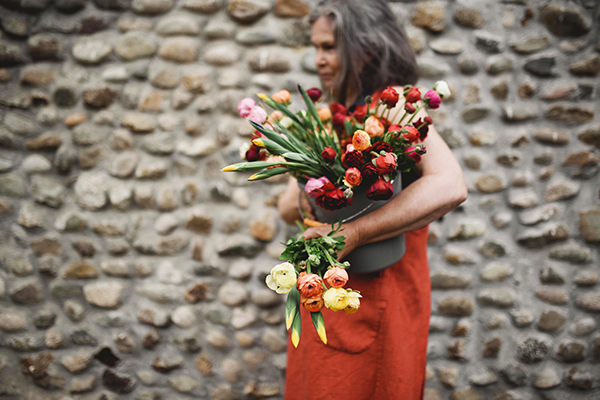 Lorna Jackson started flower farming intensely relatively later in life at Ninebark Farm on a century-old hayfield in Metchosin at the southern tip of Vancouver Island in British Columbia, Canada. Now 64, she plans to continue into her 70s. To keep going, she makes adaptations to ease the toll on her body.
Lorna Jackson started flower farming intensely relatively later in life at Ninebark Farm on a century-old hayfield in Metchosin at the southern tip of Vancouver Island in British Columbia, Canada. Now 64, she plans to continue into her 70s. To keep going, she makes adaptations to ease the toll on her body.
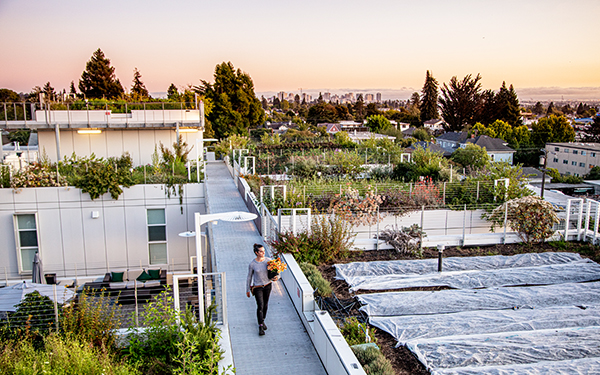 I own and operate Bluma Flower Farm, currently located on a rooftop in downtown Berkeley, California. Going into this year my plan was to try to replicate what I did the year before, one of Bluma’s best years yet. This would have been the first year I didn’t make any big changes. But then the pandemic hit and, of course, like many other businesses, I had to pivot and find ways to survive.
I own and operate Bluma Flower Farm, currently located on a rooftop in downtown Berkeley, California. Going into this year my plan was to try to replicate what I did the year before, one of Bluma’s best years yet. This would have been the first year I didn’t make any big changes. But then the pandemic hit and, of course, like many other businesses, I had to pivot and find ways to survive. 
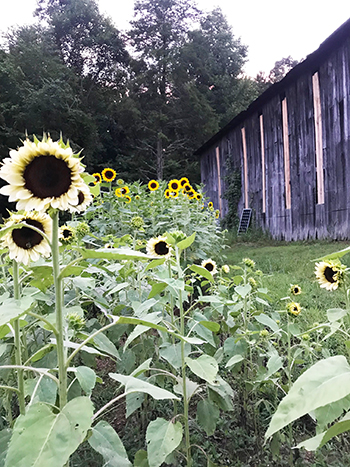 After spending years working in a corporate environment and managing key performance indicators, I was excited about the prospect of farming without the overhead of data analysis. Gone would be the management by objectives, the need to determine return on investment and other such details on which the corporate world revolves.
After spending years working in a corporate environment and managing key performance indicators, I was excited about the prospect of farming without the overhead of data analysis. Gone would be the management by objectives, the need to determine return on investment and other such details on which the corporate world revolves.
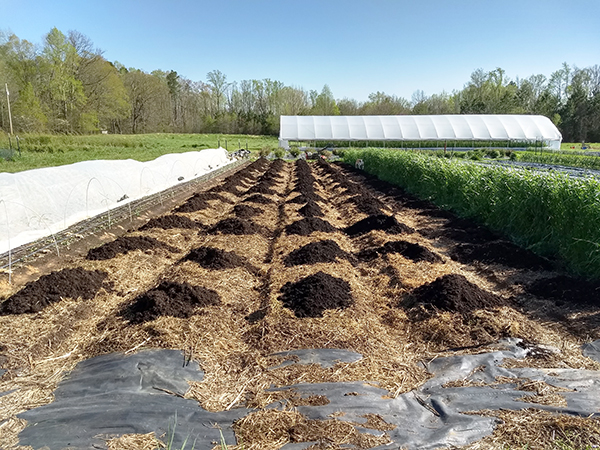 My wife, Megan, and I grow cut flowers on half an acre of a twelve-acre property in Hurdle Mills, NC. We are in the heart of tobacco country. When we bought our property in 2013, our sales contract stipulated that the farmer had the right to harvest that year’s tobacco crop. Based on our best guesses, that marked at least the 100th consecutive year of tobacco/wheat rotations on this property. The farmer was kind enough to disc in the tobacco stubble after the harvest.
My wife, Megan, and I grow cut flowers on half an acre of a twelve-acre property in Hurdle Mills, NC. We are in the heart of tobacco country. When we bought our property in 2013, our sales contract stipulated that the farmer had the right to harvest that year’s tobacco crop. Based on our best guesses, that marked at least the 100th consecutive year of tobacco/wheat rotations on this property. The farmer was kind enough to disc in the tobacco stubble after the harvest.
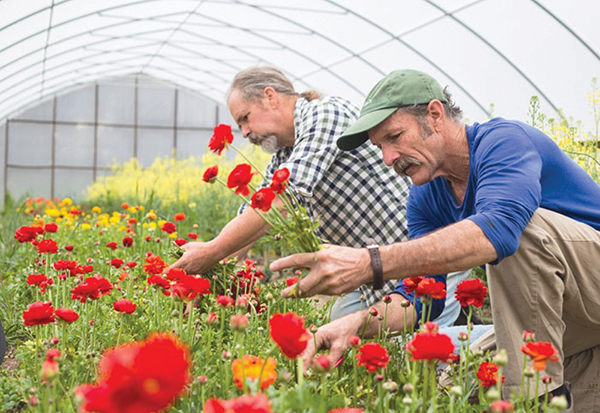 During the COVID era my usual travels have been curtailed. So, I got to thinking about what farms I had visited in the past that I knew pretty well, where a simple phone call could possibly stand-in for a proper on-farm interview and tour. First to my mind was Dripping Springs Garden, an oasis of natural and man-made beauty that is the life’s work of a good friend of mine, Mark Cain, and his farm partner, Michael Crane.
During the COVID era my usual travels have been curtailed. So, I got to thinking about what farms I had visited in the past that I knew pretty well, where a simple phone call could possibly stand-in for a proper on-farm interview and tour. First to my mind was Dripping Springs Garden, an oasis of natural and man-made beauty that is the life’s work of a good friend of mine, Mark Cain, and his farm partner, Michael Crane.
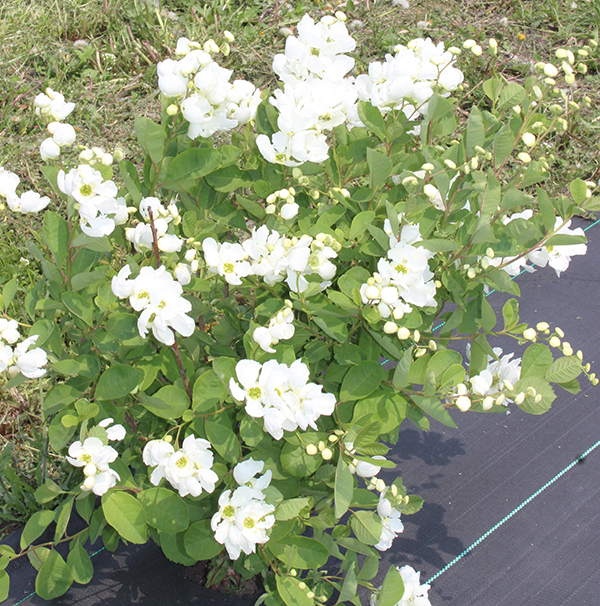 There are a lot of things we can’t grow in our climate and soil here in zone 4a in Starbuck, Minnesota. But I’m especially envious of some of the woody perennials I see other farmers growing – even at farms just a few hours south of us. As a result, I’m always looking for new woodies to try that are hardy here.
There are a lot of things we can’t grow in our climate and soil here in zone 4a in Starbuck, Minnesota. But I’m especially envious of some of the woody perennials I see other farmers growing – even at farms just a few hours south of us. As a result, I’m always looking for new woodies to try that are hardy here. 